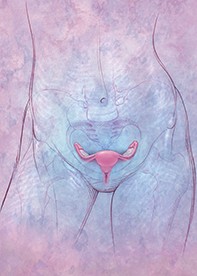Primary ovarian insufficiency
Primary ovarian insufficiency (POI; also known as premature ovarian failure/dysfunction/insufficiency or premature menopause) is characterised by amenorrhoea, sex hormone (oestrogen, progesterone and testosterone) deficiency and elevated gonadotrophins levels in a woman aged more than two standard deviations below the mean age of menopause estimated for her reference population.1 In practical terms, it occurs spontaneously in 1% of women before the age of 40 years. POI is defined as a disorder in ovarian function in any woman before the age of 40 years, irrespective of the cause.
Although most cases of POI are idiopathic, common causes include familial links and genetic disorders such as monosomy X, trisomy X and fragile X syndrome. Autoimmune links with thyroid and adrenal insufficiency, coeliac disease and diabetes also affect up to 15% of women with POI. POI may also be a result of metabolic disease and infection.

